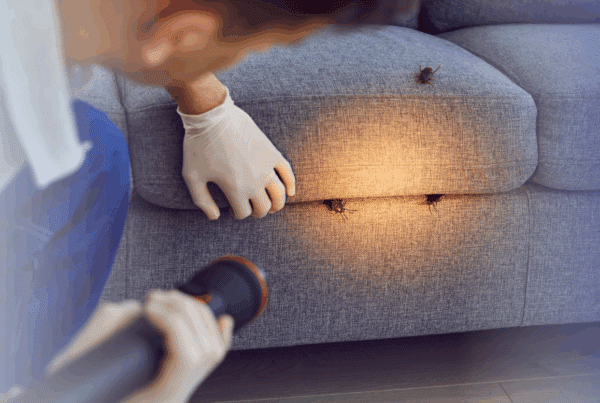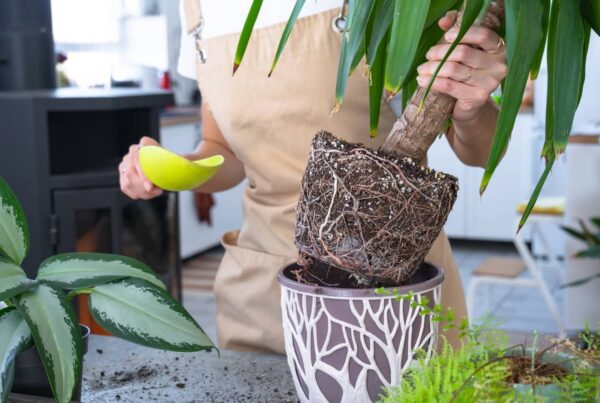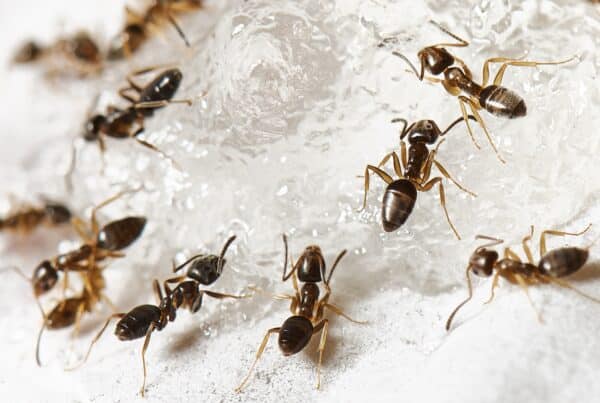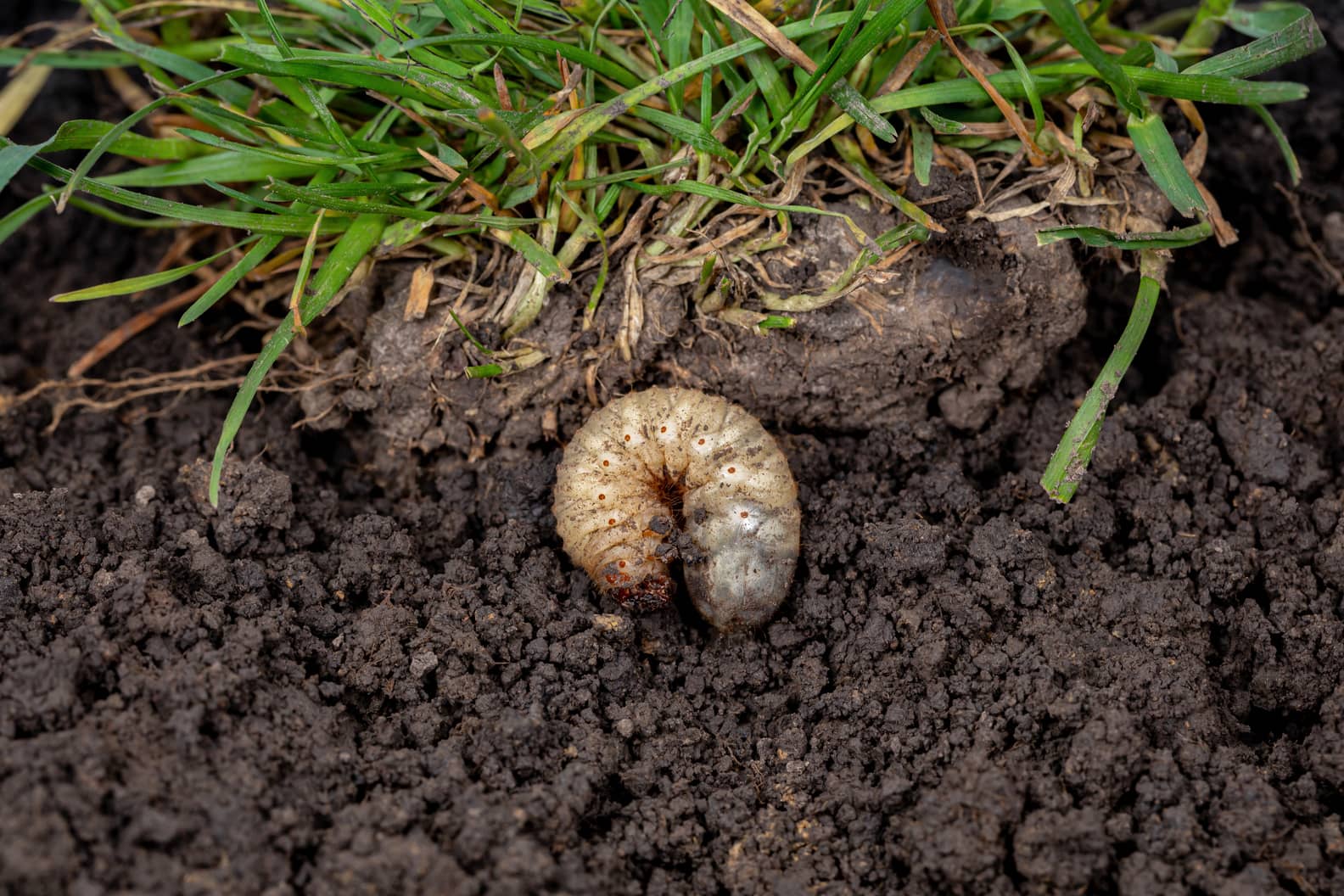
Grubs might be small, but the damage they cause to your lawn can be big and frustrating. These little pests are the larvae of beetles like Japanese beetles and June bugs, and they thrive on grassroots and organic matter in your soil. Spotting the signs early is crucial for saving your lawn from further harm – but what does grub damage even look like? Let’s explore the telltale signs of grub damage and how you can protect your grass from pesky invaders.
Identifying Grubs
Grubs are the larvae of various beetles, including Japanese beetles and June bugs. They are small, C-shaped insects with white or yellowish bodies and brown heads.
These pests are typically found just below the soil surface, where they feed on grassroots and organic matter. Grubs can grow up to an inch long and are usually discovered when you dig into the soil or notice damage to your lawn.
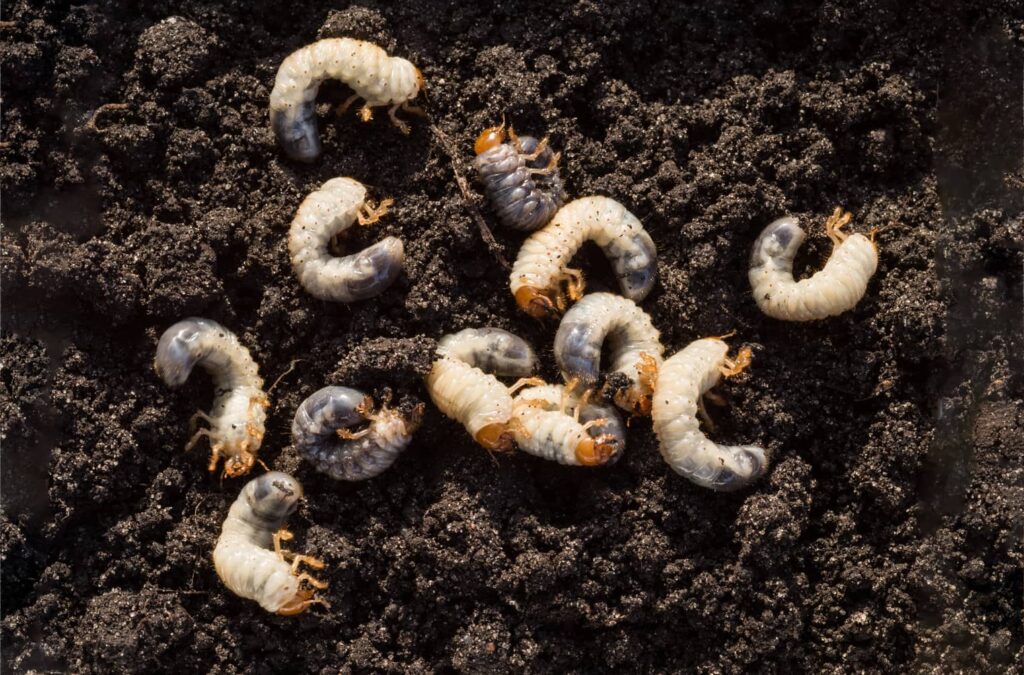
Signs of Grub Damage
Recognizing the signs of grub damage early can save your lawn from significant harm. Here are the key indicators:
- Brown, Dead Patches: One of the most noticeable signs of grub damage. These patches occur because grubs feed on the roots of the grass, preventing it from getting the nutrients it needs to stay healthy.
- Spongy or Loose Grass: If your grass feels spongy or lifts easily when you tug on it, this is a strong indication of grub activity. The grubs’ feeding habits destroy the root system, making the grass lose its anchorage in the soil.
- Increased Bird Activity: Birds, skunks, and other animals often feed on grubs. If you notice an unusual amount of bird activity in your yard, it might be because they are hunting for grubs.
When Grubs Appear
Grubs generally appear in late summer or early fall, coinciding with the lifecycle of the adult beetles. During this time, adult beetles lay their eggs in the soil. These eggs hatch into grubs, which then feed throughout the fall and into the spring. Understanding this timing is crucial for effective grub control, as it helps you plan the best times for inspection and treatment.
To determine if grubs are the source of your lawn issues, you need to inspect your soil. Here’s how:
- Select an Area: Choose a few areas in your lawn that show signs of damage.
- Dig Up a Section: Use a shovel to cut a square foot section of sod and peel it back.
- Examine the Soil: Look for grubs just below the surface. If you find more than 5 grubs per square foot, you likely have a grub problem.
Treating Grubs
Once you’ve identified what grub damage can look like, the next step is treatment. The best time to treat grubs is during their early, vulnerable stages in late summer or early fall. Here are some effective methods:
1) Chemical Insecticides: Apply a granular or liquid insecticide specifically designed for grub control. These products are most effective when applied to young grubs.
2) Biological Controls: Use beneficial nematodes, microscopic worms that naturally prey on grubs. This eco-friendly option can help reduce the grub population without harmful chemicals.
3) Cultural Practices: Maintain a healthy lawn by mowing at the proper height, watering deeply but infrequently, and aerating regularly. Healthy grass is more resistant to pest damage.
Average Cost of Treatment
The cost of treating grubs can vary widely depending on a few factors, such as the size of your lawn, the severity of the infestation, and the type of treatment you choose.
On average, you can expect to pay between $50 and $150 for professional grub control services. While this might seem like an added expense, it’s a worthwhile investment to prevent extensive damage to your lawn. Investing in professional treatment can save you money and effort in the long run by ensuring your lawn remains healthy and vibrant!
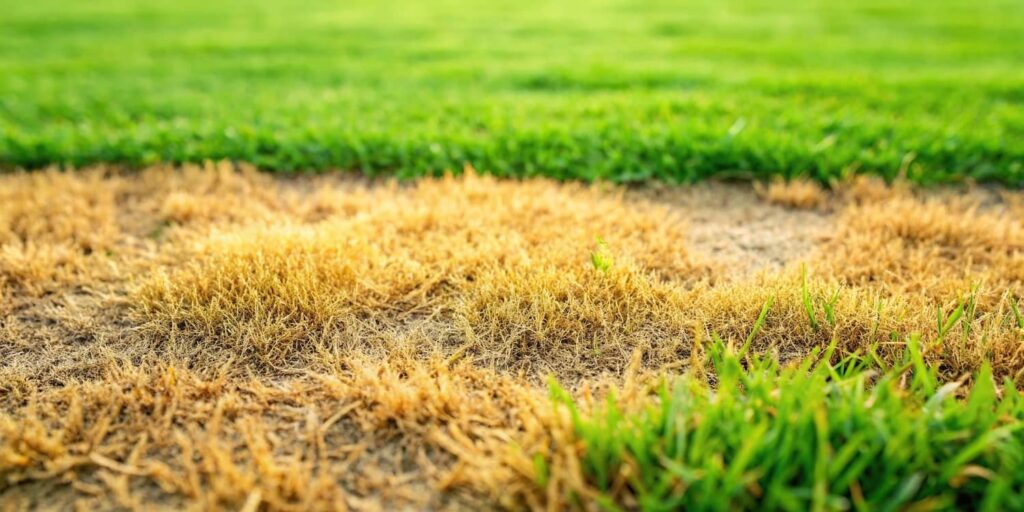
Brown, dead grass, which could be a sign of grubs
Preventing Grub Infestations
Preventing grubs from becoming a problem is often easier than treating an existing infestation! Do this:
- Regular Maintenance: Keep your lawn healthy with regular mowing, watering, and aeration.
- Attract Natural Predators: Encourage birds and other natural predators to visit your yard. They can help keep the grub population in check.
- Use Proactive Treatments: Consider having professionals apply insecticides in late spring or early summer to stop grubs before they start.
When to Call a Professional
While some homeowners may feel comfortable treating grubs on their own, it’s advisable to contact a professional if the infestation is severe or if you’re unsure about the proper course of action. Honor Services has the knowledge and experience to effectively handle grub problems and ensure the health of your lawn.
Conclusion
Grub damage can cause serious damage to your lawn if it’s not dealt with promptly – knowing what to look for and taking quick action can protect your grass. Whether you decide to tackle the problem yourself or call in the professionals, acting early is essential to maintaining a lush, healthy lawn. If you need expert advice or professional grub control, reach out to Honor Services in Melbourne, FL, and surrounding areas.

